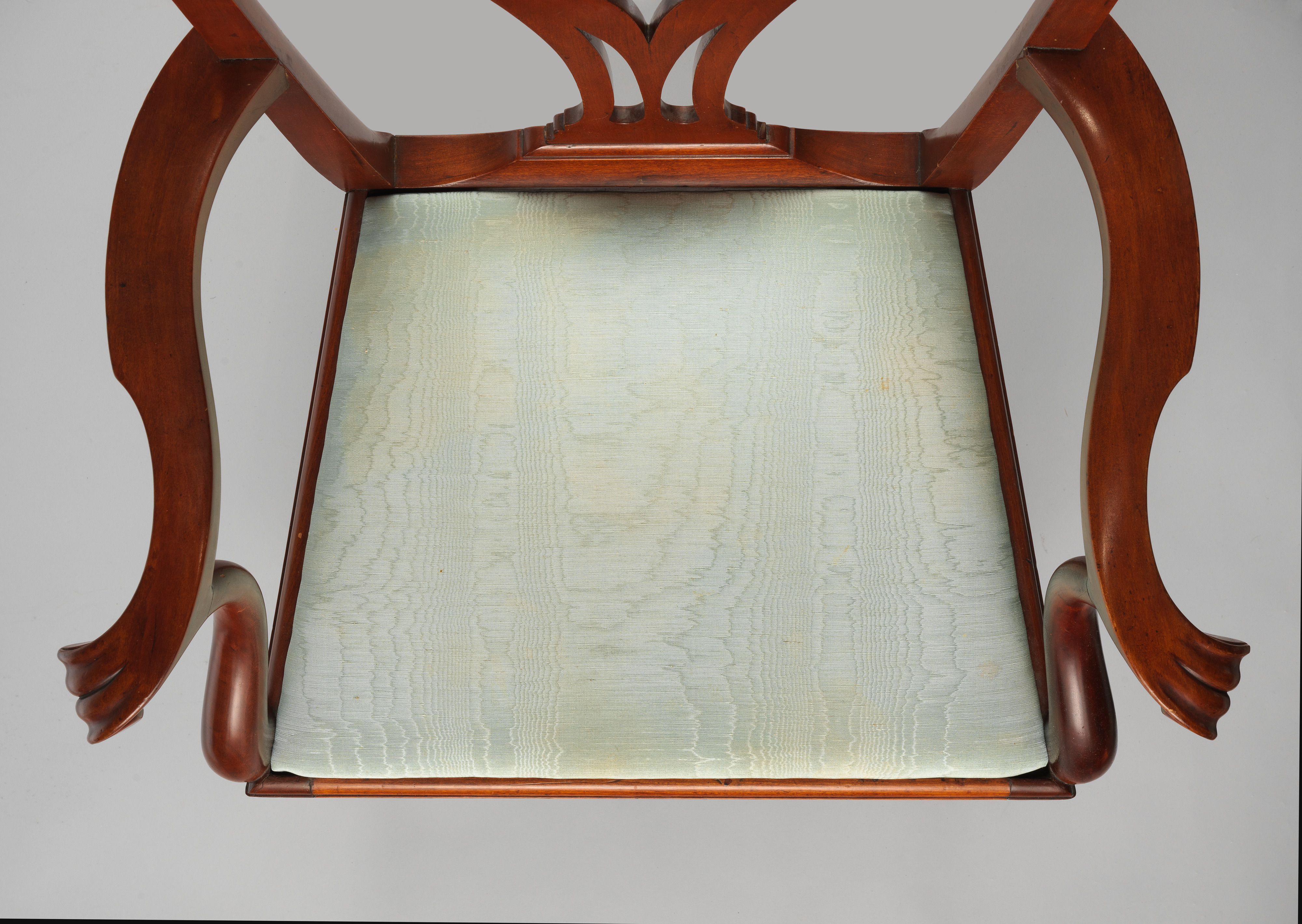Armchair
Attributed to Eliphalet Chapin American
Eliphalet Chapin transformed furniture-making in Connecticut in the mid- to late eighteenth century. Descending from a dynasty of western Massachusetts furniture-making families, Chapin invigorated local traditions with global, rococo designs from Philadelphia but never lost sight of his local audience and their preferences for subtle carving and fondness for native woods, like cherry. A true hybrid in form and design, elements borrowed from Boston, like the distinct "owl’s eye" pierced back, blend seamlessly with Philadelphia traits like the slightly compressed claw-and-ball feet. This introduction of Philadelphia traditions in central Connecticut has been attributed to Chapin’s tenure in the city after he was temporarily exiled from Windsor following a paternity suit.
This image cannot be enlarged, viewed at full screen, or downloaded.
This artwork is meant to be viewed from right to left. Scroll left to view more.






